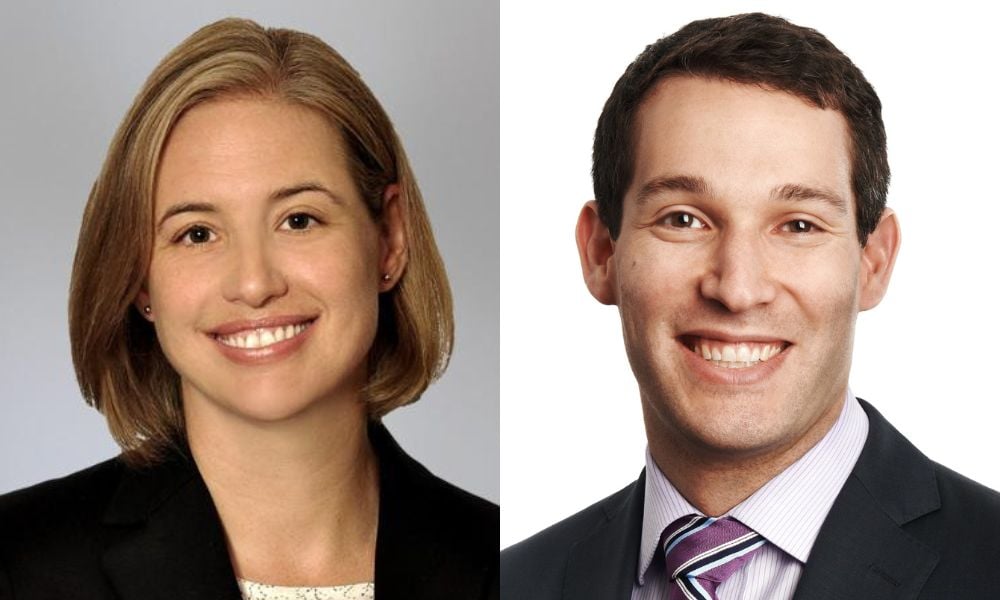
Companies with existing voluntary compensation clawback policies must ensure compliance with SEC

Canadian companies listed on US stock exchanges are among those affected by new Securities and Exchange Commission listing requirements impacting compensation clawbacks and expected to take effect on October 2, 2023, with compliance mandated within 60 days.
The rules require all issuers on US exchanges to adopt mandatory clawback policies for incentive compensation actually received by executives during the three years preceding a financial year restatement. The policies must provide that the companies recoup the amount by which the original compensation exceeds what the executives would have received based on the original statements, whether or not there was any misconduct or honest error by the executive.
The rules also require issuers to disclose the compliance policies as well as any efforts made to recoup compensation once their policy has triggered a clawback.
“The consequence of non-compliance is the risk of civil penalties, and even delisting,” says Lynne Lacoursière, the Toronto-based co-chair of Osler, Hoskin & Harcourt’s executive compensation practice.
It’s not as if compensation clawback policies are new to Canadian companies.
“The SEC rules essentially make prescriptive concepts that many issuers have already adopted voluntarily,” says Benjamin Iscoe, a partner in Dentons Canada LLP’s Toronto corporate, securities and corporate finance, and mergers and acquisitions groups. “And although Canadian law does not currently require clawback policies, proxy advisory firms such as Glass Lewis and International Shareholder Services, as well as the Canadian Coalition for Good Governance support them.”
Under Canadian securities law, issuers are required to disclose policies and decisions concerning compensation recovery in their annual information circular. Having such policies, however, is not mandatory.
In 2019, Parliament adopted amendments to the Canadian Business Corporations Act requiring companies covered by the legislation to disclose information about the “recovery of incentive benefits or other benefits” paid to “senior management”, the amendments have not been proclaimed nor have the government published regulations.
“In any case, the amendments seem more focused on disclosure than enforcement,” Iscoe says.
Still, the Innovation, Science and Economic Development department has provided further guidance on the proposed amendments.
“ISED proposed that the disclosed information should follow a ‘disclose or explain’ regime where companies indicate whether or not they have a clawback policy, and if not, the reasons why they have not adopted one,” Iscoe says. “If the company has a policy, ISED proposed that it disclose its objectives and key provisions.”
According to Lacoursière, there are some key differences between the new US rules and most Canadian issuers’ existing clawback policies.
“Most voluntary policies require misconduct as one of the triggers for a clawback, where the SEC rules do not. Also, typical Canadian practices give boards discretion as to pursuing recovery and do not set firm standards on the amount of recovery that the company must pursue.”
There are several exceptions to the US rules. The primary exception, a safe harbour where complying with the new rules would violate the company’s “home country” law, applies only where the relevant home country law was adopted before November 28, 2022.
Here, Canadian employment laws could cause a problem.
“Under Ontario law, for examples, employers may have difficulties clawing back cash-based compensation such as wages, but the jurisprudence is not as clear if the compensation is in the form of securities,” Iscoe says. “So companies governed by Ontario employment law and the new US rules should try to ensure that compensation subject to clawbacks under the US rules be entirely securities based.”
Alternatively, Iscoe says, employers could draft employment agreements requiring employees to return compensation under certain conditions.
“Provisions of this kind may still not allow clawback from wages but would at least give the employer a basis to claim recovery from the employee.”
Another exception applies where the cost of recovering the clawback exceeds the value of the clawback.
“This might happen, for example, where companies must incur third party expenses to recover compensation,” Iscoe says. “There’s a kind of ‘de minimis’ concept here where the SEC won’t ask issuers to jump over hoops to collect where it just doesn’t make sense.”
What is clear is that Canadian issuers must act promptly.
“Companies need to examine not only their clawback policies, but must also review their plan documents, employment agreements and indemnification agreements, among others, and decide whether they need to amend these documents and how to incorporate them in a mandatory policy,” Lacoursière says. “It will take a bit of planning to decide on an approach and get this done.”